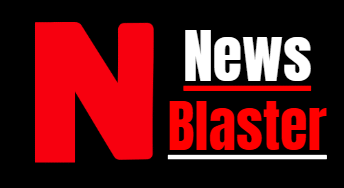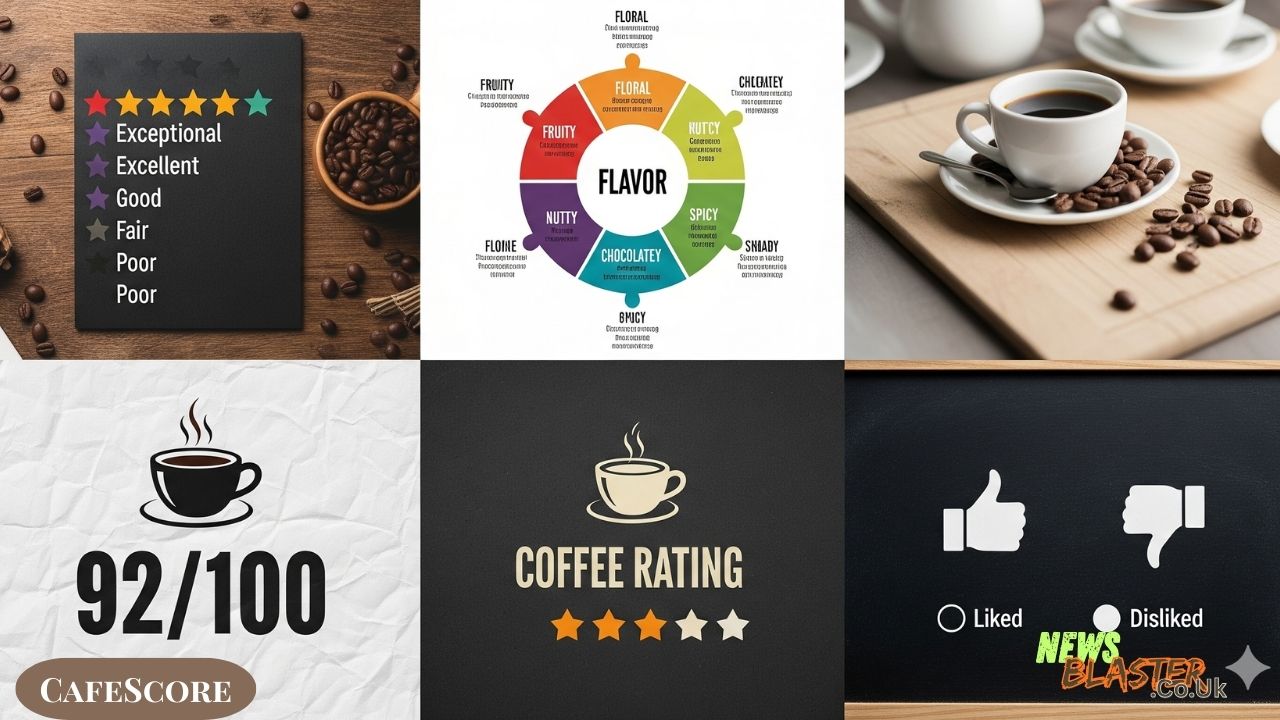Coffee lovers around the world rely on various scoring systems to identify exceptional brews and make informed purchasing decisions. Among these evaluation methods, cafescore represents a modern approach to assessing coffee quality that benefits both industry professionals and everyday consumers.
What Are Coffee Scoring Systems?
Coffee scoring systems serve as standardized evaluation methods designed to measure coffee quality objectively. These systems play a crucial role in the specialty coffee industry by providing consistent benchmarks that help roasters, buyers, and consumers understand what makes one coffee superior to another.
The primary purpose of these evaluation frameworks extends beyond simple quality control. They serve as consumer guidance tools that help people navigate the complex world of specialty coffee while establishing industry standards that promote transparency and excellence throughout the supply chain.
The Specialty Coffee Association Approach
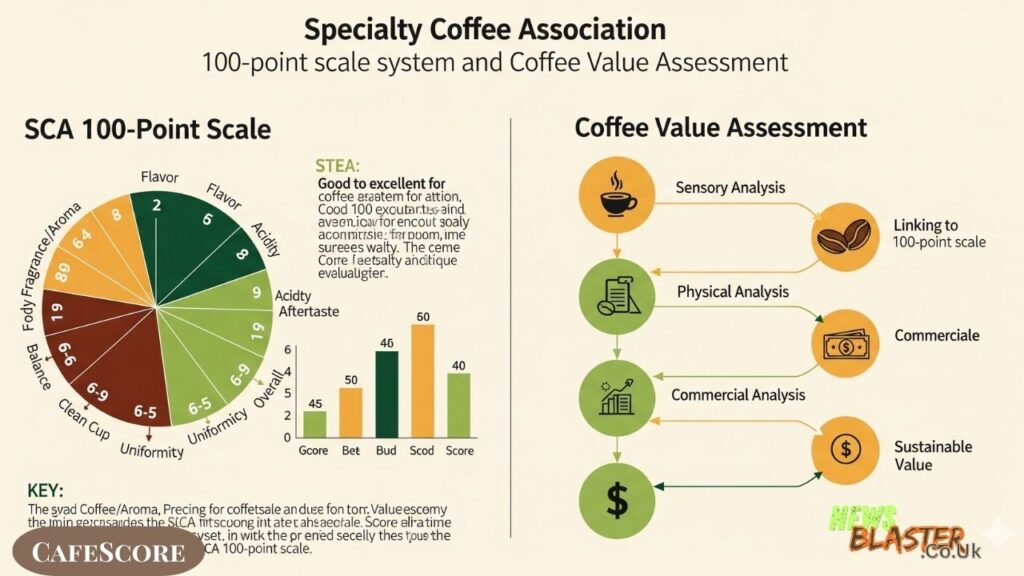
SCA 100-Point Scale System
The Specialty Coffee Association has established the gold standard for coffee evaluation through their comprehensive 100-point rating system. Certified Q graders conduct these assessments using rigorous protocols that ensure consistency across different evaluators and regions.
Under this system, specialty coffee must achieve a minimum score of 80 out of 100 points to qualify for the specialty grade designation. This threshold separates exceptional coffee from commercial-grade offerings, helping consumers identify truly outstanding products.
The quality assessment process relies heavily on cupping, a standardized tasting methodology that evaluates coffee across multiple sensory dimensions. Professional cuppers examine everything from initial aroma to final aftertaste, creating detailed profiles that capture each coffee’s unique characteristics.
Coffee Value Assessment Evolution
The industry has embraced the Coffee Value Assessment as a modern, high-resolution evaluation system that operates across four distinct assessment types. This comprehensive approach provides more detailed insights than traditional scoring methods.
The CVA system evaluates coffee attributes with greater precision, offering a more nuanced understanding of quality factors that influence the final cup. This methodology is now available in multiple languages, making it accessible to coffee professionals worldwide.
Understanding Coffee Quality Score Categories
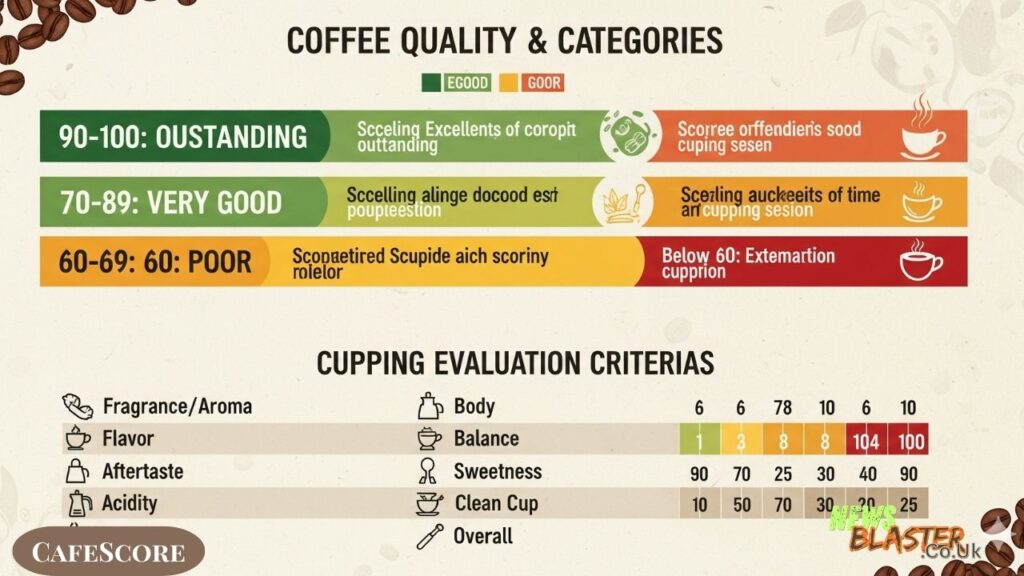
Score Ranges and Their Meanings
Coffee scores follow specific ranges that indicate quality levels. Coffees scoring 80+ points represent the entry level for specialty grade, while those achieving 85+ points demonstrate superior quality characteristics. The most exceptional coffees earn 88+ scores, representing the pinnacle of coffee excellence.
These quality tiers help consumers understand the differences between commercial-grade coffee and specialty offerings. The scoring system creates clear distinctions that guide purchasing decisions and set appropriate expectations for flavor experiences.
Cupping Evaluation Criteria
Professional coffee evaluation examines multiple sensory aspects during the cupping process. Aroma and fragrance assessment begins the evaluation, followed by comprehensive flavor profile analysis that identifies specific taste notes and characteristics.
Cuppers also evaluate acidity levels, body texture, and overall balance to determine how well different flavor elements work together. The aftertaste evaluation considers how flavors develop and linger after swallowing, while defect identification ensures only clean, fault-free coffees receive high scores.
Alternative Cafe Rating Systems
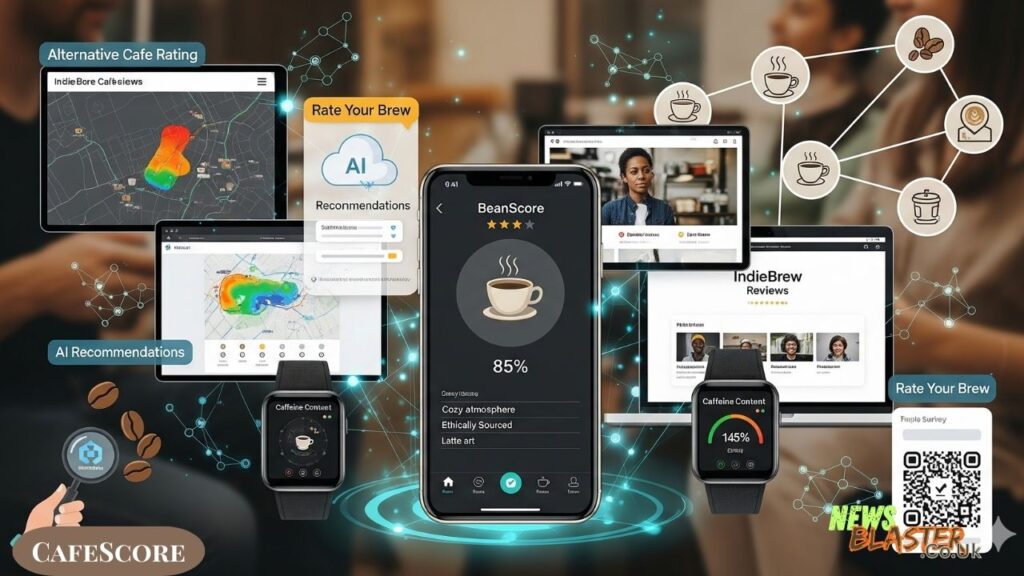
Independent Rating Platforms
Beyond industry-standard scoring systems, independent rating platforms have emerged to serve different evaluation needs. Custom cafe rating systems provide frameworks specifically designed for cafe exploration, offering consumer-focused evaluation criteria that consider factors beyond just coffee quality.
These adaptable rating frameworks allow users to assess cafes based on personal preferences and priorities, creating more personalized evaluation experiences that complement professional quality assessments.
Digital Platform Innovation
The emergence of digital evaluation tools represents the next evolution in coffee rating systems. These technology-driven platforms promise to make coffee evaluation more accessible while maintaining scientific rigor in assessment protocols.
Digital platforms can process vast amounts of evaluation data, identifying patterns and trends that help both consumers and industry professionals make better decisions about coffee selection and preparation.
Professional vs Consumer Evaluation Methods
Professional Assessment Standards
Professional coffee evaluation requires extensive training and certification. Q-grader certification represents the industry standard for professional cuppers, ensuring evaluators possess the knowledge and sensory skills necessary for accurate assessment.
Standardized cupping protocols eliminate variables that could influence evaluation results, while advanced sensory evaluation techniques help professionals identify subtle quality differences that untrained palates might miss.
Consumer-Oriented Approaches
Consumer-focused evaluation considers factors that matter most to everyday coffee drinkers. Accessibility and user experience factors play important roles in these assessments, along with ambiance and service quality considerations that affect the overall coffee experience.
Value proposition assessment helps consumers understand whether premium pricing reflects genuine quality improvements, enabling more informed purchasing decisions based on individual preferences and budgets.
Industry Applications and Benefits
Quality Control and Sourcing
Coffee scoring systems provide essential tools for quality control throughout the supply chain. Green coffee purchasing decisions rely heavily on professional evaluations that identify the best lots before they reach roasters.
Roasting quality assessment ensures consistency in finished products, while supply chain quality management uses scoring data to maintain standards from farm to cup. These applications help the entire industry maintain high quality standards.
Marketing and Communication Tools
Professional scores serve as powerful consumer education tools that help people understand quality differences between coffee offerings. Product differentiation strategies often highlight scoring information to justify premium positioning.
Transparency in quality claims builds consumer trust while helping coffee companies communicate their commitment to excellence. These marketing applications demonstrate how scoring systems benefit both businesses and consumers.
Future Developments in Coffee Scoring
Innovation and Technology Integration
The coffee industry continues exploring new approaches to quality assessment, including discussions about developing specialized roast quality scoring systems. These innovations could provide more detailed insights into how roasting techniques affect final cup quality.
Technology integration possibilities include artificial intelligence applications that could enhance evaluation consistency and identify quality patterns across large datasets. These developments promise to make coffee scoring more accurate and accessible.
Standardization Challenges
Despite advances in scoring methodology, the industry faces ongoing standardization challenges. Different regions and organizations sometimes use varying criteria, creating potential confusion for consumers and industry professionals.
Future developments will likely focus on creating more unified standards that maintain regional flexibility while ensuring global consistency in quality assessment. These efforts will help cafescore and similar systems provide reliable guidance for coffee enthusiasts worldwide.
Also Read: Elida Schoology: Transforming Education Through Digital Innovation and Community Engagement
